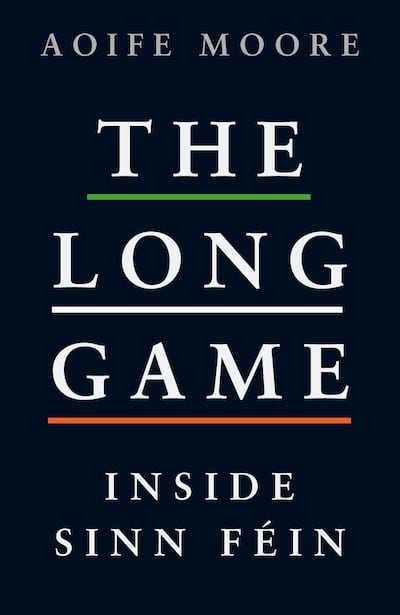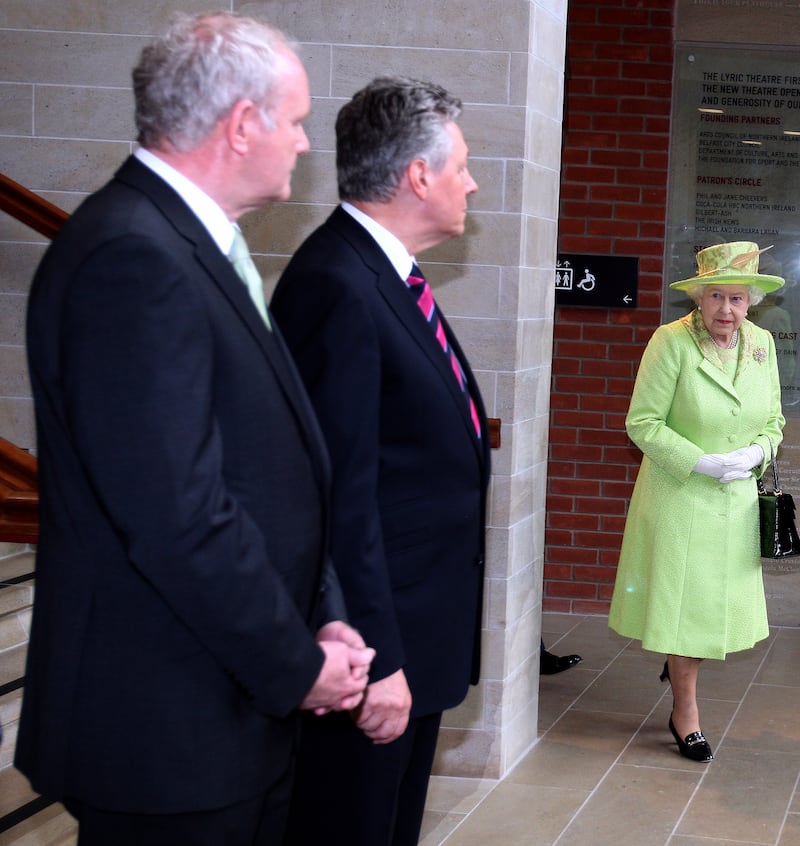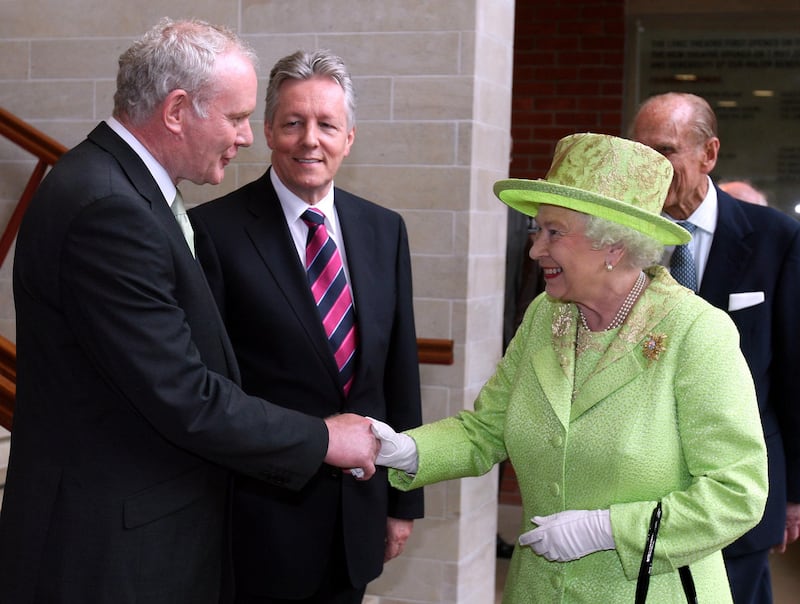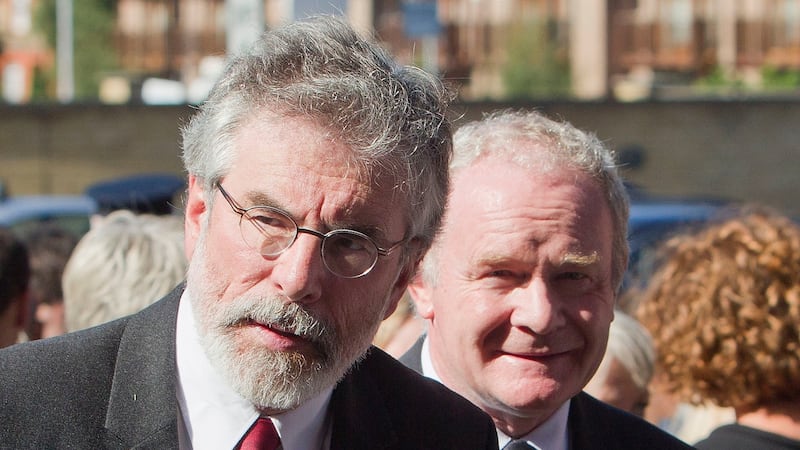In this edited extract from her new book, The Long Game: Inside Sinn Féin, Aoife Moore spoke to Co-operation Ireland chief executive Peter Sheridan about the day he found a senior IRA man sitting in the reception of his workplace, and his contribution to the historic handshake between Queen Elizabeth and then deputy first minister for Northern Ireland Martin McGuinness of Sinn Féin. Sheridan believes McGuinness tried to kill him when he was in the RUC. The queen visited Ireland in 2011
The queen’s visit was a roaring success. She stayed for four days, and her programme was heavily oriented towards peace and reconciliation. She laid a wreath at the Garden of Remembrance, and she visited Croke Park, site of the first Bloody Sunday massacre in 1920, when British forces opened fire on a GAA match.
On her fourth day, the queen visited Cashel, Co. Tipperary. The town’s Sinn Féin mayor, Michael Browne, met her and shook her hand. Browne had been told by party headquarters to boycott the visit in keeping with party policy, but he disregarded the order.
As Cllr Browne told The Nationalist: “I just said “I welcome you to Cashel your majesty and I hope you enjoy your stay” in Cashel. [. . .] She just said thanks very much. I am glad I met her. I can only see that her visit can do good. You could be protesting all your life. [. . .]

‘We are in fierce hard economic times and the fact she has come here might encourage more tourists to visit. If the economy is to take off again that is the sort of money we have to get into the country’ [. . .]
For her speech at Dublin Castle, the queen opened with a few words in Irish: ‘A Uachtaráin agus a chairde ‘, she said. At her side, President McAleese – who had suggested some Irish phrases the queen might use but assumed it wouldn’t happen – gasped ‘Wow’, and spontaneous applause erupted among the crowd of 172 guests.
The visit had been a roaring success, and Sinn Féin had missed out on it. In the aftermath, speaking on BBC Radio 4′s Today programme, [Gerry] Adams tried to defend the party’s stance, while also hinting at an openness to future engagement:
‘Many people I have spoken to, particularly from the North, have expressed a disappointment that she did not apologise in a more direct and clear way for British involvement in Irish affairs. [. . .]
‘If there is to be more benefit out of this, it will be if it moves beyond these important gestures and remarks’ [. . .].
‘It’s another step in the journey. It was the conditions created by the peace process which allowed this to happen.
‘It’s a page in a book – and we need to write the next page and the next page and keep moving the process on.’
Things moved on very quickly. Later that same year, as Sinn Féin’s candidate for the Irish presidency, Martin McGuinness, said he was prepared to meet all heads of state without exception, including the queen. The party knew it had been out of step with the rest of the island in its boycott of the queen’s visit, and wanted to ensure it wouldn’t happen again.
In 2012, without consulting Sinn Féin, the Northern Ireland Office announced plans for a queen’s Jubilee party at Stormont...
McGuinness was in his office with a number of trusted advisors when, without prompting, he stated casually: ‘Aye, I’m going to have to meet her.’

Those present in the Deputy First Minister’s office knew what he meant, and got to work.
As with most things in Sinn Féin, a document had to be written on the decision.
A staffer pulled out a sheet of paper and immediately began drafting a briefing note. The note proposed that Sinn Féin should be a part of the queen’s visit, but it also included a list of pros and cons, for balance. The paper was given to the National Officer Board, which set up a discussion group, as was also par for the course.
It was agreed almost immediately within the party that McGuinness would not attend the Jubilee party, but would meet the queen separately. Hours of debate within the party were devoted to such issues as the location of the meeting, control of the photos, and whether it would be still photography only or live video. Live coverage could be a problem, the members agreed.
‘Because you can be too friendly and you have no control over that and how it looks,’ one person who was at the meeting told me. ‘Whatever else about Martin, he has a friendly face, and he looks warm – what if he looks too warm?’
These debates were constant within the party, and only became more intense when it came to organizing the event with the other stakeholders.
The party’s negotiator was running between the British and the DUP with any number of inane questions. He recalls their staff openly laughing, sometimes sympathetically.
Somebody raised the issue that if it happened at Stormont, there might be crowds of people waving Union Jacks. Martin McGuinness could not be seen standing in front of crowds waving Union Jacks. Stormont was out.
Peter Sheridan, the chief executive of Co-operation Ireland, proposed Belfast’s Lyric Theatre as a possible location, saying it had ‘a neutral, independent feel to it’. The Sinn Féin negotiator went to the theatre with staff from the NIO, the DUP and Buckingham Palace, and it was agreed that it would be a suitable venue. Sinn Féin’s Ard Comhairle voted on it, and accepted the Lyric Theatre, though not unanimously.

The story of Co-operation Ireland, its chief executive and Martin McGuinness is an interesting one in itself.
According to its website, ‘Co-operation Ireland is an all-island peace-building organisation. We work to build a shared and cohesive society by addressing legacy issues of the conflict and facilitating contact and collaboration between people from different backgrounds across these islands.’
Peter Sheridan joined Co-operation Ireland in 2008 as its chief executive, after a career with the RUC and PSNI, during which he rose to the position of Assistant Chief Constable. Sheridan was responsible for the Crime Operations Department, which included investigations of organized crime and terrorism.
Sheridan believes the first time Martin McGuinness tried to have him killed was in March 1987. Sheridan had been called to the scene of an IRA murder in Derry when a booby-trapped car exploded. Two other detectives died instantly.
[ McGuinness’s admiration for the queen was striking and unexpectedOpens in new window ]
[ Queen Elizabeth quips 'I'm still alive' upon meeting Martin McGuinnessOpens in new window ]
Two other attempts on his life were made in the 1990s. The gardaí uncovered an IRA plan to put a bomb under Sheridan’s car while he was at Mass. The plan included details about his wife, children and his local church.
He first met McGuinness in Downing Street. Along with the then PSNI Chief Constable, Sir Hugh Orde, they met Gerry Adams, Gerry Kelly and Prime Minister Tony Blair, to try to convince Sinn Féin to support policing in Northern Ireland. Over the years the two men became close. When asked about it later, Sheridan said: ‘People have asked me did I like Martin. I think people who met him found it hard not to like him.’…

In 2017, Peter Sheridan, who had been the most senior Catholic within the PSNI as Assistant Chief Constable, was in his office in his new role as the chief executive of Cooperation Ireland.
Just before the Christmas holiday, Sheridan left his office and found a senior IRA man sitting in reception.
Sheridan did a double take. There had been numerous plots to kill Sheridan as a senior Catholic in the police, but those days were over. He had come toe to toe with killers before, but had no idea why one had turned up in his new civilian place of work.
Sheridan brought the IRA man into his office and closed the door. The man was sheepish and stumbled over his words, but eventually managed to explain to Sheridan that he wanted to talk to the widow of a police officer he had murdered. He hoped Sheridan could help put them in touch.

Sheridan told the man that the murder had taken place before he had even joined the police, so he didn’t know the woman or if she was even alive.
The IRA man was persistent. He told Sheridan he wanted to apologise. Sheridan was frank: he said his worry was that they would re-traumatize this now elderly woman.
Sheridan eventually found the woman through contacts within the PSNI, and reached out. The woman said she would like to meet her husband’s murderer, but she did not want him in her house and she did not want her family to find out. She told Sheridan that she would not be telling her nearest and dearest.
Sheridan secured a location for the pair to meet. On a Monday morning, he accompanied the IRA man there.
When they got into the room, he said he would leave, so that the pair could speak privately. But the woman asked Sheridan to stay.
The first two hours were mostly made up of the IRA man explaining his background, where he grew up and how he got involved with paramilitaries. The man was at pains to explain that he was not trying to justify his life choices; he just wanted her to understand where he came from.

Towards the end of the meeting, the man said: ‘Peter, would you mind giving us a couple of minutes?’
The woman nodded. The former police officer left the room.
In their time alone, the man told others afterward, he wept as he said he did not expect her forgiveness and asked the woman if he could give her a hug. She wept as she said yes. The pair leaned across in their chairs and embraced each other.
The IRA man had not initially set out to approach Sheridan to set up the meeting. He was an active member of Sinn Féin, and he told the party he wished to make contact with the widow of the man he’d killed. The party figures he approached told him they would come back with an answer when they had discussed it with their superiors. The answer eventually came: no.
One senior party member told me that the ruling was consistent with Sinn Féin’s general approach to such matters. A former IRA volunteer may have committed an act, but ‘It’s not your memory to know, irrespective of how this affects people. The movement has made a decision there’ll be a story told around this. And it’s not your story.’
The Long Game: Inside Sinn Féin by Aoife Moore is published by Sandycove


















